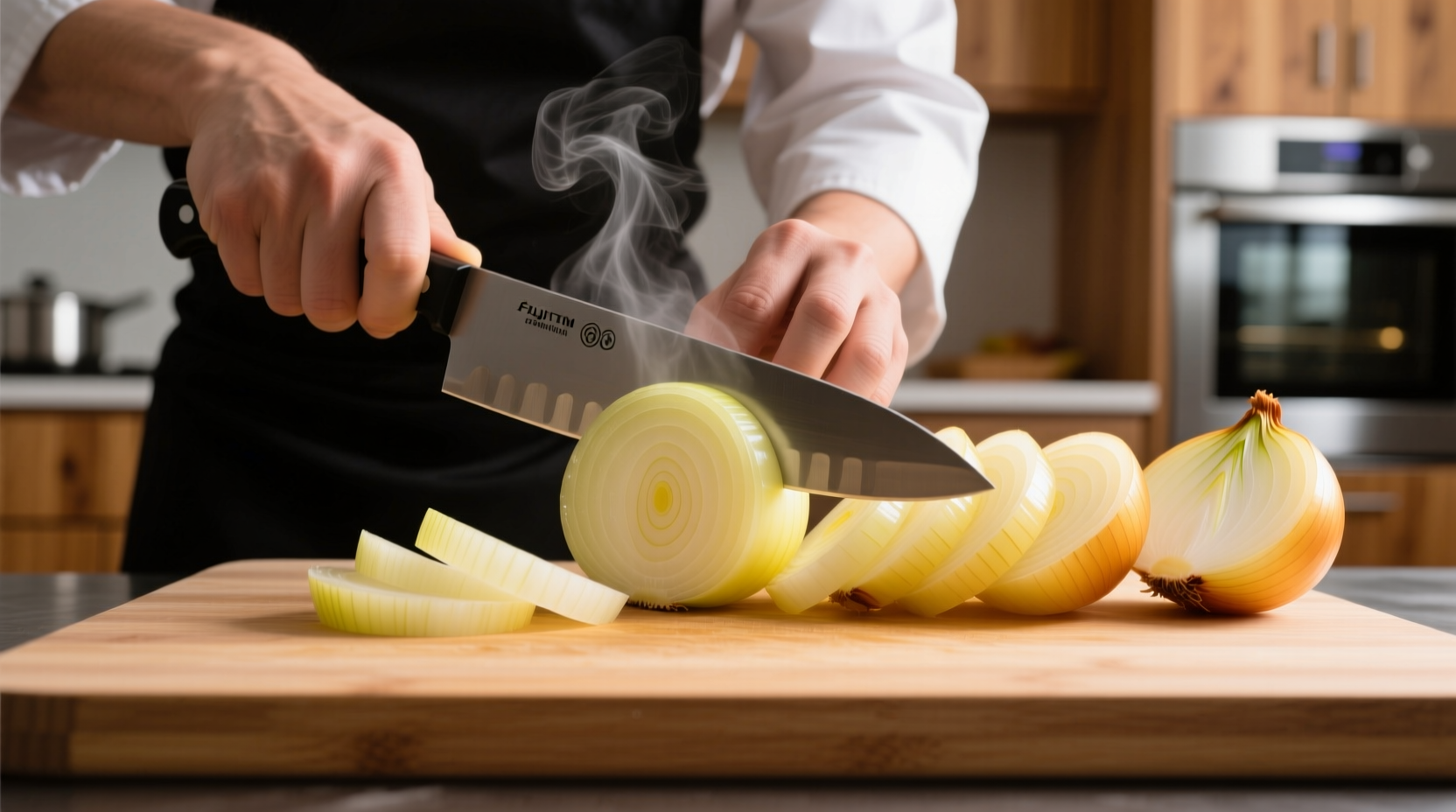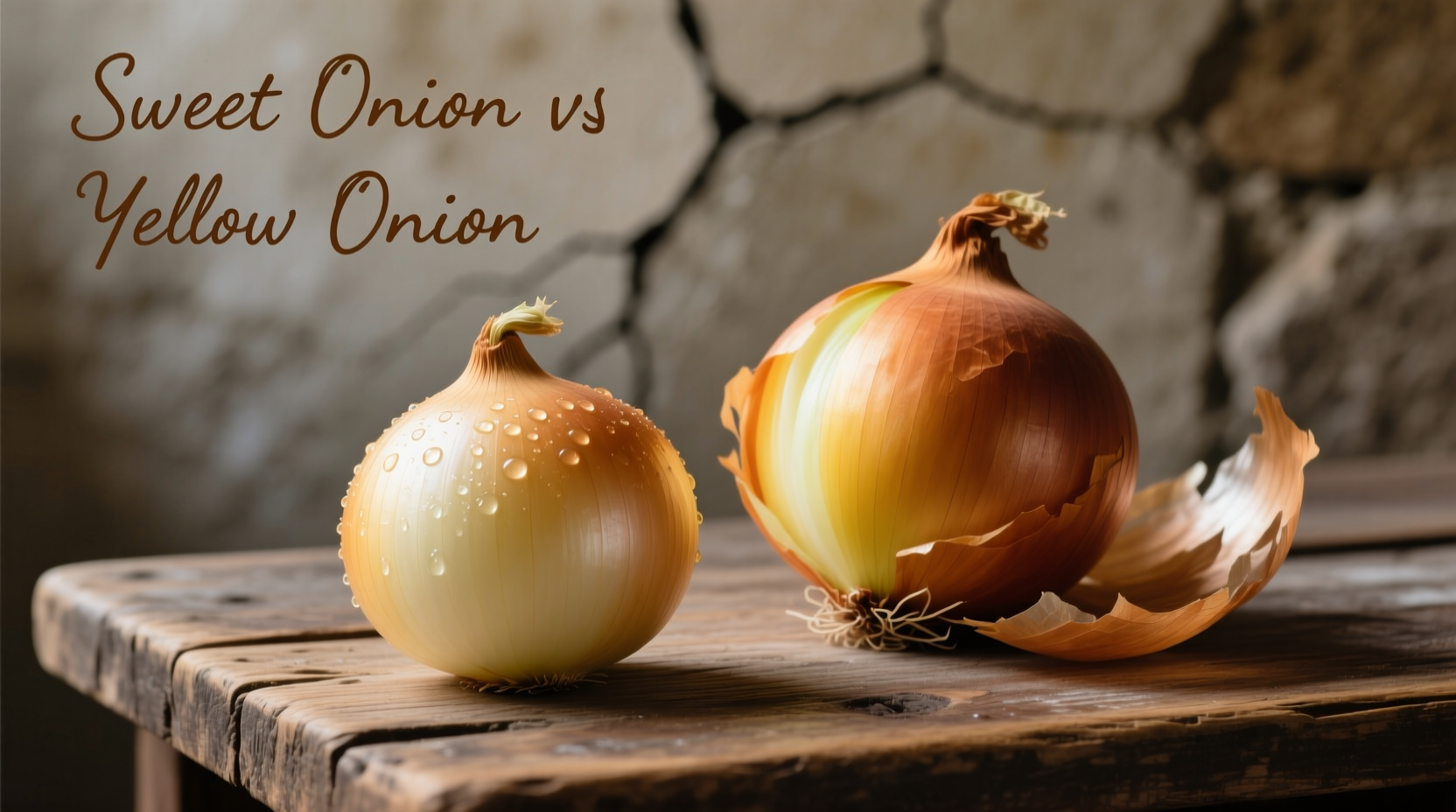Choosing between sweet onions and yellow onions can make or break your dish. As a professional chef who's worked with ingredients at every level from Michelin-starred kitchens to home cooking demonstrations, I've seen how this simple decision impacts flavor profiles. Let's cut through the confusion with science-backed guidance you can trust in your daily cooking.
| Characteristic | Sweet Onions | Yellow Onions |
|---|---|---|
| Sugar Content | 5-6% (higher) | 4-5% (lower) |
| Sulfur Compounds | Lower (milder) | Higher (more pungent) |
| Best For | Raw applications, salads, sandwiches | Cooking, caramelizing, soups, stews |
| Storage Life | 2-3 weeks at room temperature | 1-2 months at room temperature |
| Common Varieties | Vidalia, Walla Walla, Maui | Spanish, Bermuda, generic yellow |
Understanding the Flavor Chemistry
The fundamental difference between sweet and yellow onions lies in their chemical composition. Sweet onions grow in low-sulfur soil regions like Georgia (for Vidalias) and Washington (for Walla Wallas), resulting in lower levels of sulfur-containing compounds that create that characteristic "bite." According to research from the Oregon State University Food Innovation Center, sweet onions contain approximately 25-30% less pyruvic acid—the compound responsible for onion pungency—than their yellow counterparts.
Yellow onions, by contrast, develop higher concentrations of these sulfur compounds, which transform beautifully when exposed to heat. This chemical reaction is why yellow onions caramelize more effectively, creating complex flavor compounds that sweet onions can't match due to their higher water content.

When to Choose Each Variety
Reach for sweet onions when:
- Serving raw in salads, sandwiches, or as garnish
- Creating quick-pickled onions that won't overpower other ingredients
- Making salsas or ceviche where raw onion flavor dominates
- Cooking delicate dishes where subtle onion flavor is preferred
Choose yellow onions when:
- Caramelizing for French onion soup or pizza toppings
- Building flavor foundations for soups, stews, and sauces
- Roasting with meats or vegetables
- Creating marmalades or chutneys requiring deep flavor development
Storage Science: Maximizing Shelf Life
Sweet onions' higher water content makes them more perishable. The University of Arizona Cooperative Extension confirms that sweet onions maintain quality for only 2-3 weeks at room temperature in a cool, dark place with good air circulation. Refrigeration extends their life to 3-4 weeks but can cause texture changes.
Yellow onions, with their thicker, drier skins, follow the USDA's recommended storage guidelines of 30-45 days at 32-40°F with 65-70% humidity. In typical kitchen conditions (cool, dark pantry), they'll last 1-2 months. Never store either variety in plastic bags—use mesh bags or baskets that allow airflow.
Smart Substitution Strategies
Running out of one variety doesn't have to ruin your recipe. When substituting:
- Sweet for yellow: Use 25% more sweet onion and reduce added sugar in recipes. Best for quick-cooking dishes, not ideal for long caramelization.
- Yellow for sweet: Soak sliced yellow onions in ice water for 10-15 minutes to reduce pungency when using raw. For cooking, use standard measurements.
- Emergency swap: White onions work as a middle ground—more pungent than sweet but milder than yellow.
Avoid These Common Onion Mistakes
Even experienced cooks make these errors that compromise flavor:
- Using sweet onions for long caramelization—their high moisture content prevents proper browning and creates a mushy texture
- Storing sweet onions in the refrigerator long-term—causes them to absorb moisture and spoil faster
- Not adjusting seasoning when substituting—sweet onions require less added sugar in recipes
- Cutting onions hours before use—flavor compounds continue developing, making them increasingly pungent
Professional Technique: Maximizing Flavor Potential
How you cut your onions affects their chemical reactions. For sweet onions used raw, slice against the grain (perpendicular to growth rings) to minimize cell damage and reduce sharpness. When cooking yellow onions, cut with the grain (parallel to growth rings) to preserve structure during longer cooking times.
For caramelization perfection with yellow onions, maintain medium-low heat (around 300°F) and be patient—proper caramelization takes 35-45 minutes. Rushing with high heat creates bitterness rather than the desired sweet, nutty flavor compounds.
Nutritional Comparison
Both varieties offer similar nutritional profiles with minor differences. According to USDA FoodData Central, sweet onions contain slightly more vitamin C (12mg per 100g vs 9mg) while yellow onions have marginally higher quercetin content (19-35mg vs 15-25mg per 100g), a flavonoid with antioxidant properties. The differences are negligible for culinary purposes—choose based on flavor needs rather than nutritional variations.











 浙公网安备
33010002000092号
浙公网安备
33010002000092号 浙B2-20120091-4
浙B2-20120091-4